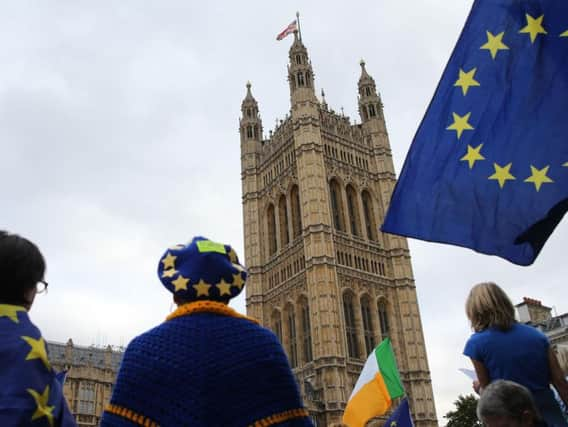What the outcome of a general election could be, according to the latest polls


After a showdown between prime minister Boris Johnson and MPs opposed to a no-deal Brexit, the UK appears on course for an election in a matter of weeks.
We have considered the results across 138 polls conducted between November 4 2018 and August 22 2019.
Advertisement
Hide AdAdvertisement
Hide AdAll polls contain a combination of information and noise, the latter resulting from errors in sampling, in interviewing and in other factors which are an inherent part of survey methodology. By “pooling the polls” the figure maximises the information and minimises the noise because the samples are very large and rogue polls which happen by chance do not dominate the picture.
Conservatives and Labour
Both Conservative and Labour support declined markedly in the run-up to the European parliament elections on May 23. Since then, Conservative fortunes have partially revived, but party support is only in the low 30% range – nearly 10% less than its vote in the 2017 general election.
Labour is in even worse shape, languishing in the low to mid-20s. Polls on voting intentions go back as far as the 1930s, but it is safe to say that such a car crash in support for both major parties has never been seen before. So we are in uncharted territory.
The major parties’ poll numbers indicate that, in a two-party contest, the apparent “Boris bounce” in Conservative vote intentions would very likely deliver a majority in the House of Commons.
One important reason why Labour has fallen so far behind is the large decline in Jeremy Corbyn’s popularity since the 2017 general election. His approval ratings then were around 45%. But by August this year they had fallen below 20% and are now very stable from one poll to the next. A large majority of voters appear to have reached the conclusion that he is not up to the job of being prime minister. Negative public feelings about Corbyn are bound to be a drag on his party’s efforts to close the gap with the Conservatives.
Lib Dem Threat
The real problem for the Conservatives is not Labour but the continuing popularity of the Liberal Democrats and the Brexit Party. The Liberal Democrats are now consistently polling in the high teens – twice what previously had been typical. In the 2015 general election, the Liberal Democrats’ vote collapsed and the Conservatives took 27 seats from them. While the Liberal Democrats recovered a little in the subsequent 2017 general election, they still only had 12 MPs.
The situation has now completely changed. If the current surge in Liberal Democrat voting intentions holds, there is a good chance that the party will win back all of the seats it lost to the Conservatives in 2015. In addition, the Lib Dems are likely to win extra seats from disgruntled Conservative Remainers who will defect in response to the Conservative’s hard-line stance on Brexit.
It is true that the Liberal Democrats will take votes from Labour as well as the Conservatives, but the policy distance between the Lib Dems and Labour on relations with the EU is now much smaller than it is with the Conservatives. The danger for the Conservatives is that Remainers are likely to vote tactically as a result, supporting the Liberal Democrats in seats in the West Country, for example, and Labour in seats in the North-East and Merseyside.
What of the Brexit Party?